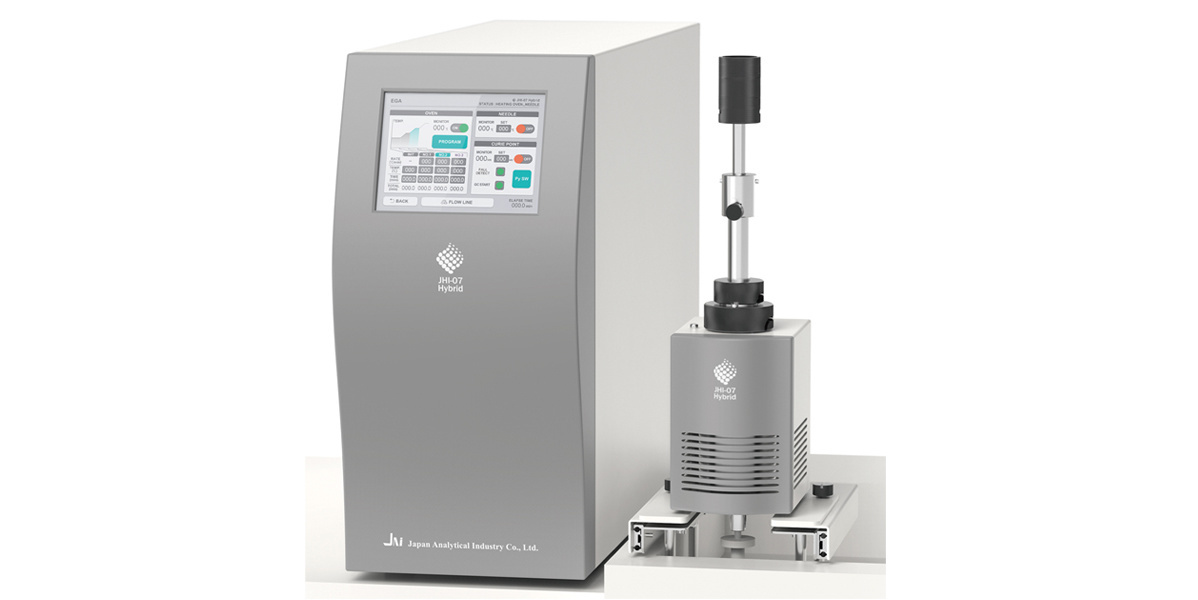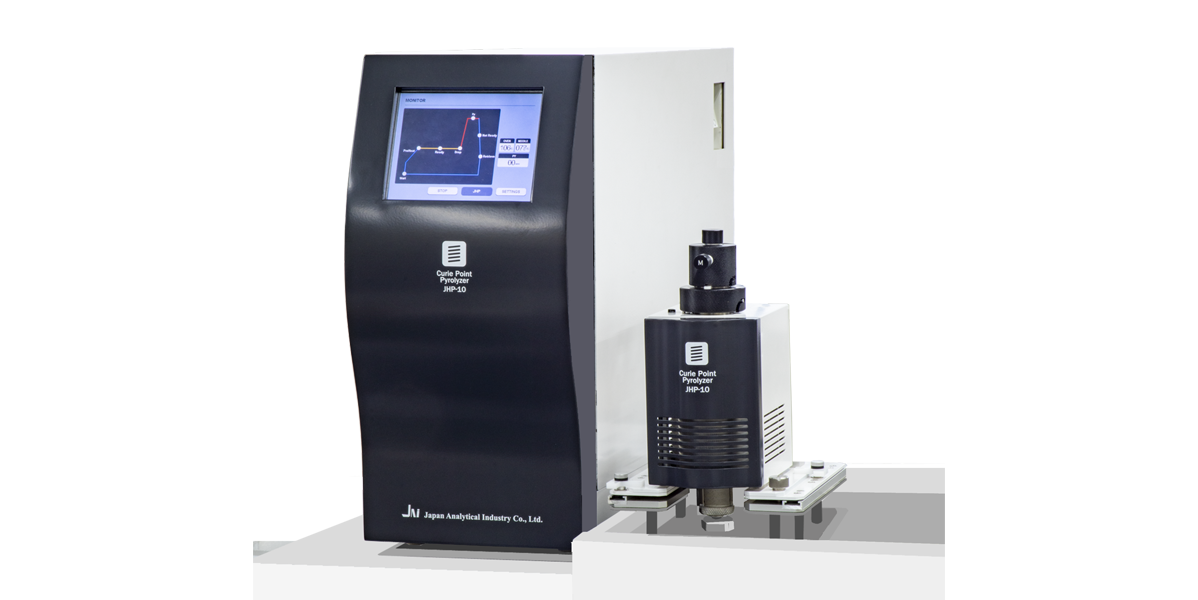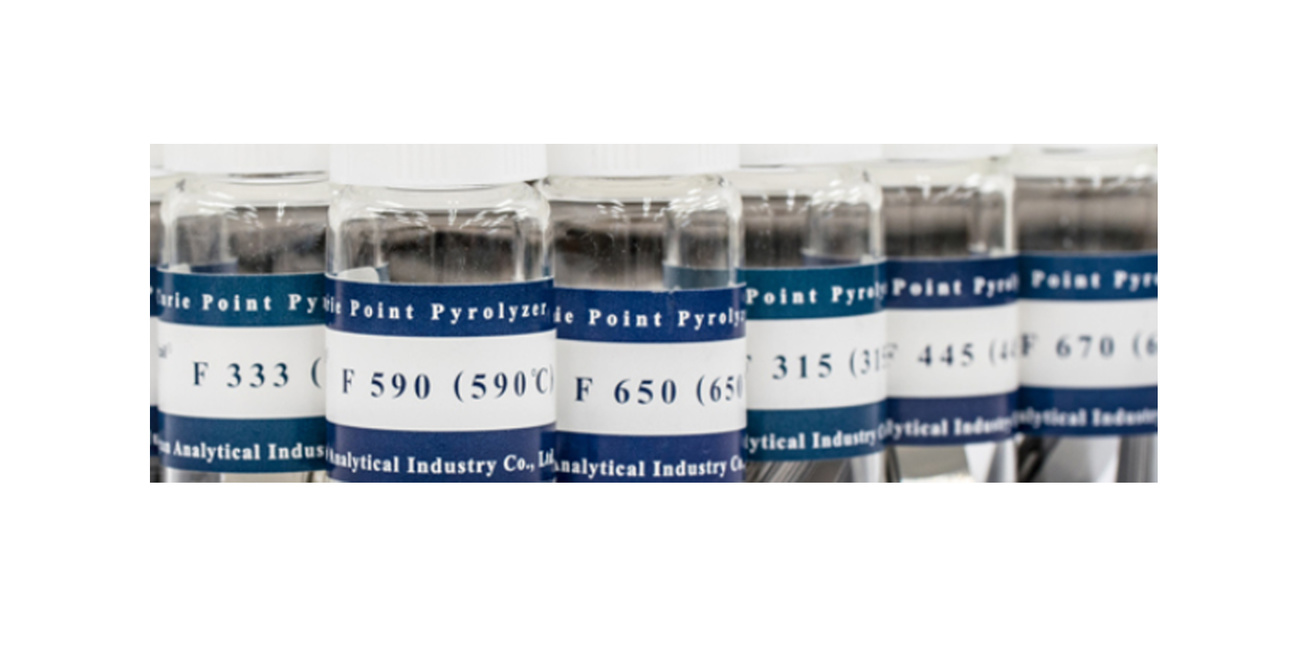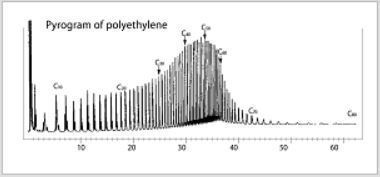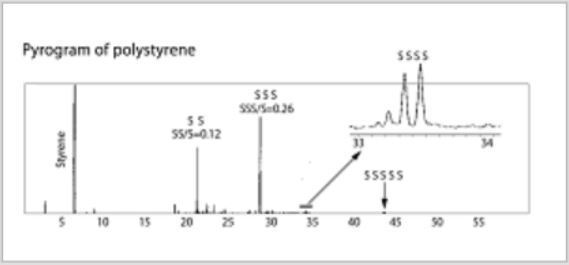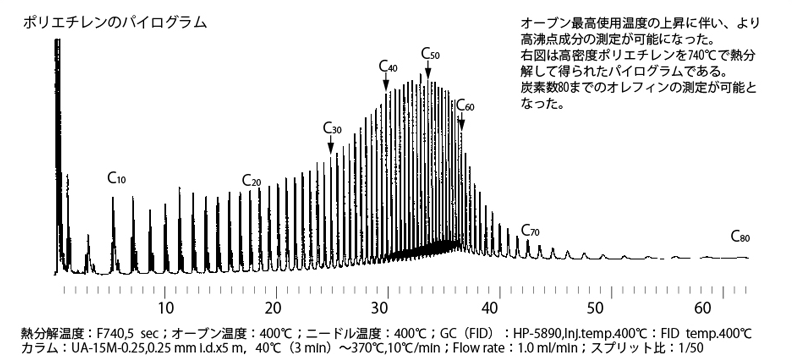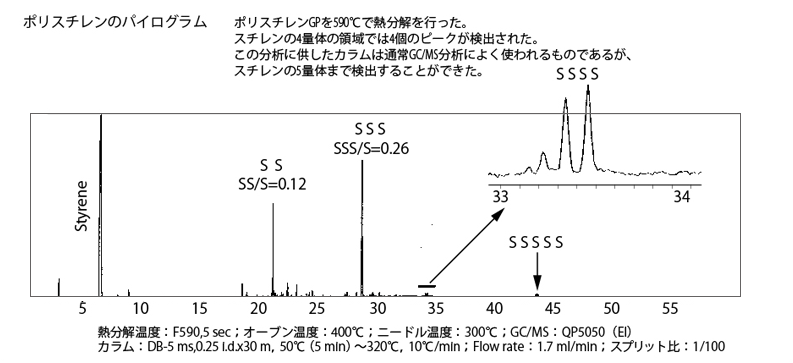Pyrolyzer

Pyrolyzer

Curie Point Pyrolyzer is ...

Py-GC (Pyrolysis Gas Chromatography) is a method of chemical analysis in which organic material is heated and thermochemically decomposed without participation of oxygen to produce smaller molecules that are separated by gas chromatography and detected using mass spectrometry.
Py-GC has been well used especially for characterization of polymer samples, polymer quantitative and qualitative analysis, structural analysis in detailed point and thermal stability analysis.
Curie Point Pyrolyzer uses pulse heating method applied with induction heating and curie point of ferromagnetic properties. When ferromagnetic properties receive induction heating, it loses its magnetic properties and reaches up to its curie point (temperature) in an instant. JAI has developed 21 different curie point pyrofoils with alloy as heat source. Each pyrofoil has one fixed temperature and they are highly stable.
Curie Point Pyrolyzer
-
1. It only takes 0.2 seconds to any target temperature with high reproducibility plus or minus 0.1°C.
-
2. Rapid heating prevents from unwanted secondary reaction and decomposition.
-
3. Easy to decompose poorly soluble compound.
-
4. 21 temperatures from 160°C to 1040°C are available.
-
5. Compatible to all major GC models.
* JAI pyrolyzers are not subject to obtain individual permission of Industrial Facilities Emitting Radio Waves. (Output 600KHz 48W)
■ Thermal decomposition temperature - time curve
Rising up to the target equilibrium temperature is almost instantaneous (within 0.2 second). Equilibrium temperature is highly accurate and stable at plus or minus 0.1°C. Pyrolysis period is precisely set with built-in timer to perform desired analysis without errors.
Equilibrium temperature is very accurate and stable at ±0.1℃.
Thermal decomposition time is able to be decided with timer
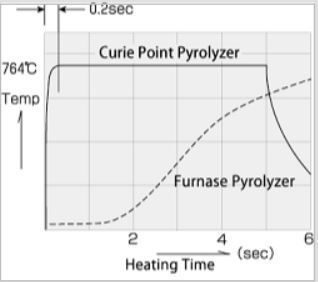

Pyrofoil 740 °C able to detect HDPE (n-C80)
Since the oven can be set at a higher temperature (400°C ), higher molecular weight of the pyrolyzates can be analyzed.
The pyrogram on the left was obtained from pyrolysis of polyethylene at 740°C for 5 sec. The pyrogram shows paraffin and olefin peaks of carbon number up to 80 as pyrolyzates.

Pyrofoil 590℃ able to detect 4 peaks at tetramer and pentamer
The pyrogram shown on the left was obtained from polystyrene pyrolyzed at 590°C for 5 sec.
4 peaks of tetramer of styrene are clearly detected. ' Also, pentamer peaks were observed which are normally difficult when using a standard capillary column.
Pyrofoil 740 °C able to detect HDPE (n-C80)
Since the oven can be set at a higher temperature (400°C ), higher molecular weight of the pyrolyzates can be analyzed.
The pyrogram on the left was obtained from pyrolysis of polyethylene at 740°C for 5 sec. The pyrogram shows paraffin and olefin peaks of carbon number up to 80 as pyrolyzates.
Pyrofoil 590℃ able to detect 4 peaks at tetramer and pentamer
The pyrogram shown on the left was obtained from polystyrene pyrolyzed at 590°C for 5 sec.
4 peaks of tetramer of styrene are clearly detected. ' Also, pentamer peaks were observed which are normally difficult when using a standard capillary column.




